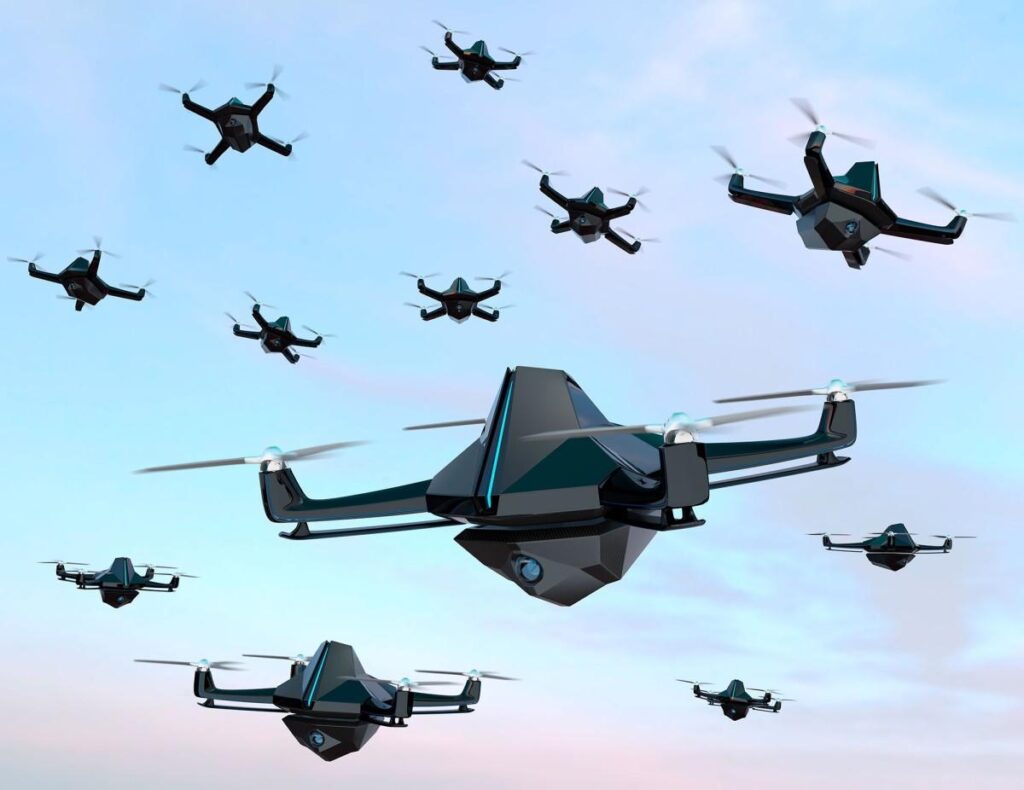The United States Marine Corps boasts a formidable array of air defense capabilities, designed to protect against a range of aerial threats.However, as the use of unmanned drones becomes increasingly prevalent on the modern battlefield, Marines are faced with a new challenge: how to effectively counter and defeat drone swarms. In this article, we will explore the evolving threat posed by drone swarms and the need for innovative solutions to ensure the Marines remain one step ahead in the ever-changing landscape of warfare.
Recognizing the Threat: The Rise of Drone Swarms in Modern Warfare
One of the biggest challenges facing the Marines in modern warfare is the threat posed by drone swarms. These unmanned aerial vehicles can overwhelm conventional air defense systems and cause meaningful damage to troops on the ground. As technology advances and drone swarms become more sophisticated, it is essential for the Marines to develop new ways to counter this growing threat.
The Marines have robust air defense capabilities, but they need a dedicated system specifically designed to defeat drone swarms. This system should have the ability to detect and track multiple drones together, as well as the firepower to take out large numbers of drones quickly and efficiently. By investing in cutting-edge technology and innovative solutions, the Marines can stay one step ahead of their adversaries and ensure the safety and effectiveness of their operations on the battlefield.
Analyzing Marine Air Defense Capabilities in the Face of Drone Swarm Attacks
Marine air defense capabilities are facing a new challenge in the form of drone swarm attacks. While marines have air defense systems in place,they are finding it difficult to effectively counter these coordinated drone attacks.
One way marines can enhance their defense against drone swarms is by incorporating advanced technologies such as AI-powered counter-drone systems that can quickly detect and neutralize multiple drones simultaneously. Additionally, training marines in tactics specifically tailored to combatting drone swarms can also improve their overall effectiveness in defending against such threats.
Exploring Strategies for Marines to Effectively Counter Drone Swarms
Marines have been equipped with advanced air defense systems to protect against traditional threats, but the rise of drone swarms presents a new challenge that requires innovative solutions. These small unmanned aerial vehicles (UAVs) can overwhelm conventional defenses with their sheer numbers and agility, making it difficult for Marines to effectively counter them.
To effectively combat drone swarms, Marines need to explore new strategies and technologies that can level the playing field. One possible solution is the use of drone jammers to disrupt the communication between the drones and their operators, causing them to lose control and crash. Additionally, implementing anti-drone lasers can quickly disable multiple drones in a swarm, providing a more efficient and cost-effective means of defense. By incorporating these tactics into their operations, Marines can better protect themselves against this evolving threat.
Recommendations for Enhancing Marine Air Defense Systems against Drone Swarms
One way to enhance marine air defense systems against drone swarms is by incorporating advanced anti-drone technology. This could include the use of jamming devices to disrupt the communication signals between the drones and their operators, as well as the growth of high-powered lasers or electromagnetic weapons to physically disable the drones. By investing in these cutting-edge technologies, the marines can better protect their assets and personnel from the growing threat of drone swarms.
Another recommendation is to improve coordination and communication among marine units to effectively counter drone swarms. This could involve implementing training programs to familiarize soldiers with tactics for detecting, tracking, and neutralizing drones. Additionally,the deployment of integrated air defense systems,such as networked radar and missile systems,can help ensure a rapid and coordinated response to drone swarm attacks. By enhancing collaboration among marine units, they can increase their overall effectiveness in defending against this evolving threat.
In Retrospect
As the threat of drone swarms continues to evolve, the need for advanced and effective air defense systems within the Marine Corps becomes ever more pressing.While Marines have a solid foundation in air defense capabilities, they must now focus on developing innovative solutions to counter these increasingly sophisticated threats. With continued research, development, and collaboration with industry partners, the Marine Corps can ensure they are equipped to effectively defeat drone swarms and protect their forces on the battlefield.Only by staying ahead of the curve and adapting to the changing landscape of warfare can the Marine Corps maintain its position as a formidable and agile fighting force.
